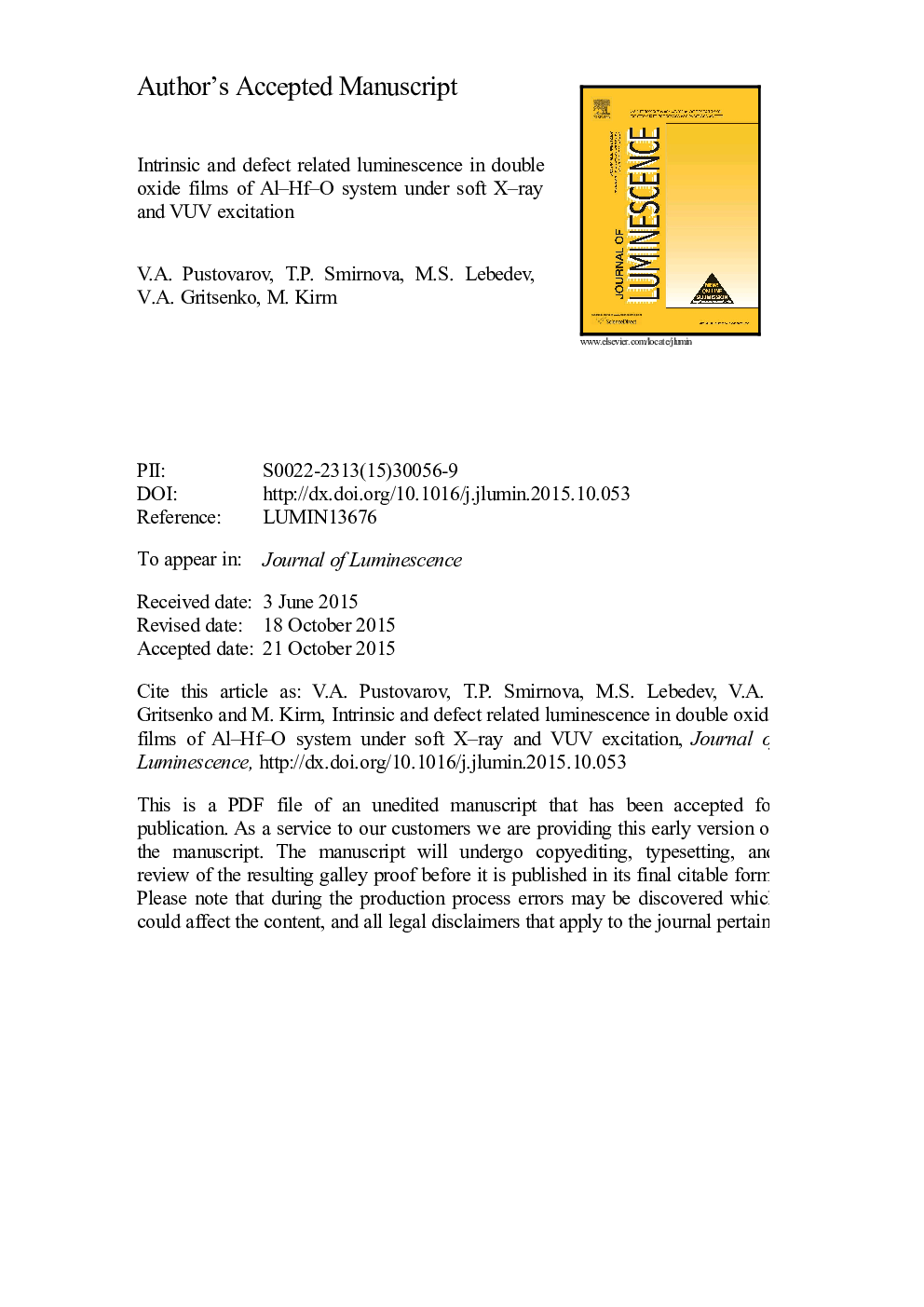| Article ID | Journal | Published Year | Pages | File Type |
|---|---|---|---|---|
| 5399072 | Journal of Luminescence | 2016 | 28 Pages |
Abstract
Low temperature time-resolved luminescence spectra in the region of 2.5-9.5 eV under soft X-ray excitation as well as time-resolved luminescence excitation spectra in the UV-VUV region (3.7-12 eV) of solid solutions AlxHfyO1âxây thin films were investigated. The values of x and Al/Hf ratio were determined from X-ray photoelectron srectroscopy data. Hafnia films and films mixed with alumina were grown in a flow-type chemical vapor deposition reactor with argon as a carrier gas. In addition, pure alumina films were prepared by the atomic layer deposition method. A strong emission band with the peak position at 4.4 eV and with the decay time in the μs-range was revealed for pure hafnia films. The emission peak at 7.74 eV with short nanosecond decay kinetics was observed in the luminescence spectra for pure alumina films. These emission bands were ascribed to the radiative decay of self-trapped excitons (an intrinsic luminescence) in pure HfO2 and Al2O3 films, respectively. Along with intrinsic host emission, defect related luminescence bands with a larger Stokes shift were observed. In the emission spectra of the solid solution films (x=4; 17; 20 at%) the intrinsic emission bands are quenched and only the luminescence of defects (an anion vacancies) was observed. Based on transformation of the luminescence spectra and ns-luminescence decay kinetics, as well as changes in the time-resolved luminescence and luminescence excitation spectra, the relaxation processes in the films of solid solution are discussed.
Related Topics
Physical Sciences and Engineering
Chemistry
Physical and Theoretical Chemistry
Authors
V.A. Pustovarov, Т.P. Smirnova, M.S. Lebedev, V.A. Gritsenko, M. Kirm,
